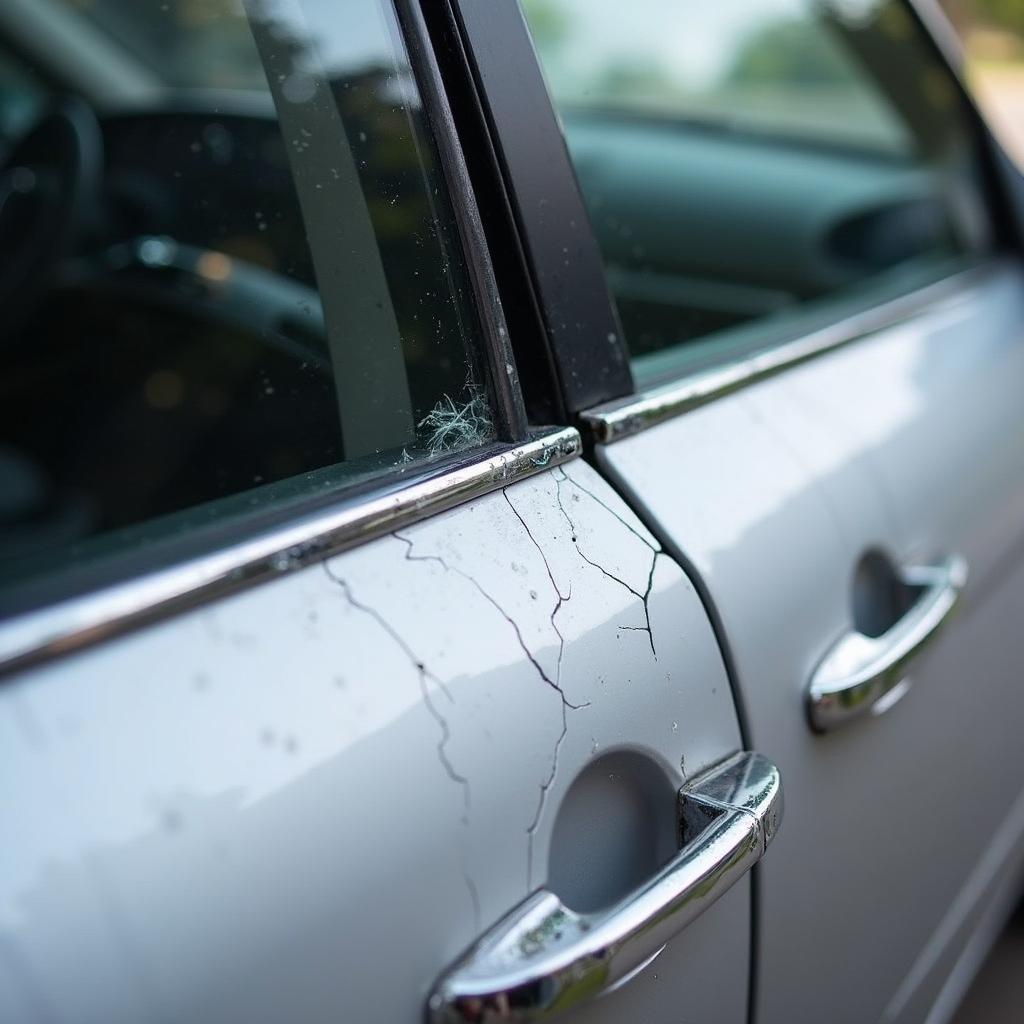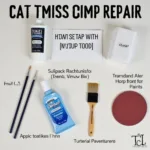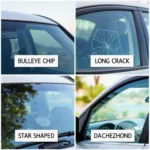Cracked molding around your car door window is more than just an aesthetic issue. While it might seem like a minor annoyance, it can lead to water leaks, wind noise, and even rust. Fortunately, repairing this yourself is often a straightforward process that can save you a trip to the mechanic.
Identifying the Damage and Necessary Repairs
Before diving into the repair process, you’ll need to assess the severity of the damage.
- Minor Cracks and Fading: If the cracks are small and primarily cosmetic, a simple touch-up with specialized molding paint or dye might do the trick.
- Moderate Cracks and Deformation: For more noticeable cracks or warping, you’ll need to use a molding repair kit. These kits typically involve filling the cracks with a flexible sealant or epoxy, then sanding and repainting the area for a seamless finish.
- Extensive Damage: In cases of severe damage, where the molding is broken or significantly deformed, replacement might be the most viable option.
Gathering Your Materials
Once you’ve determined the extent of the damage and chosen your repair method, it’s time to gather your supplies. Here’s a general list, but remember that specific items might vary based on your chosen repair kit or replacement molding:
- Cleaning Supplies: Soap and water, microfiber cloth, rubbing alcohol
- Molding Repair Kit (if applicable): This usually includes filler, sandpaper, applicator tools, and potentially paint
- Molding Paint or Dye (if applicable): Choose a color that matches your car’s existing molding
- Masking Tape and Paper: To protect surrounding areas during the repair process
- Gloves: To protect your hands
- Safety Glasses: For eye protection while sanding
Repairing Cracked Molding: A Step-by-Step Guide
Let’s walk through the repair process, focusing on using a molding repair kit. If you’re simply touching up minor cracks with paint, the process will be more straightforward.
1. Prepare the Area: Thoroughly clean the damaged molding and surrounding area with soap and water. Use rubbing alcohol to remove any remaining dirt or grease.
2. Mask Off the Area: Use masking tape and paper to protect the car’s paint and window from any spills or sanding debris.
3. Prepare the Repair Compound: Following the instructions on your chosen repair kit, prepare the filler or epoxy compound.
4. Apply the Compound: Carefully apply the compound to the cracks, ensuring you fill them completely. Use the applicator tools provided in your kit for precision.
5. Allow for Drying: Let the compound dry completely according to the manufacturer’s instructions.
6. Sand the Area: Once dry, use fine-grit sandpaper to smooth out the repaired area. Blend the edges seamlessly with the surrounding molding.
7. Clean and Prep for Paint: Wipe away any sanding dust with a clean cloth. If your kit includes paint, follow the instructions for application.
8. Paint the Molding (If Necessary): If you’re using separate molding paint or dye, apply it in thin, even coats. Allow each coat to dry before applying the next.
9. Remove Masking: Carefully remove the masking tape and paper.
When to Seek Professional Help
While repairing cracked molding can be a DIY project, there are instances where seeking professional assistance is recommended:
- Extensive Damage: If the molding is severely damaged or broken in multiple places, professional repair or replacement is often the best course of action.
- Rust or Corrosion: If you notice rust or corrosion under the molding, it’s crucial to address this before it spreads. A professional can assess the extent of the damage and advise on the best solution.
- Lack of Confidence: If you’re not comfortable tackling the repair yourself, don’t hesitate to consult a professional.
Maintaining Your Car’s Molding
Prevention is always better than cure. Here are some tips to help prevent future cracking and damage to your car’s molding:
- Regular Cleaning: Wash your car regularly, paying attention to the molding. Dirt and grime can degrade the material over time.
- UV Protection: Park your car in the shade whenever possible, or consider using a car cover to protect it from harmful UV rays, which can cause fading and cracking.
- Gentle Handling: Be mindful when opening and closing car doors, avoiding any excessive force that could impact the molding.
By addressing cracked molding promptly and adopting preventative measures, you can maintain your car’s appearance, prevent potential issues, and keep it looking its best for years to come.



